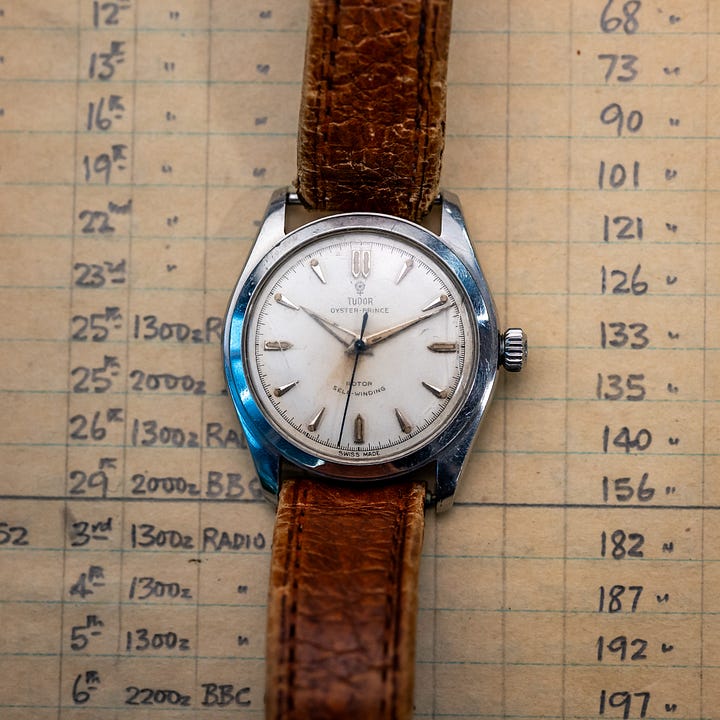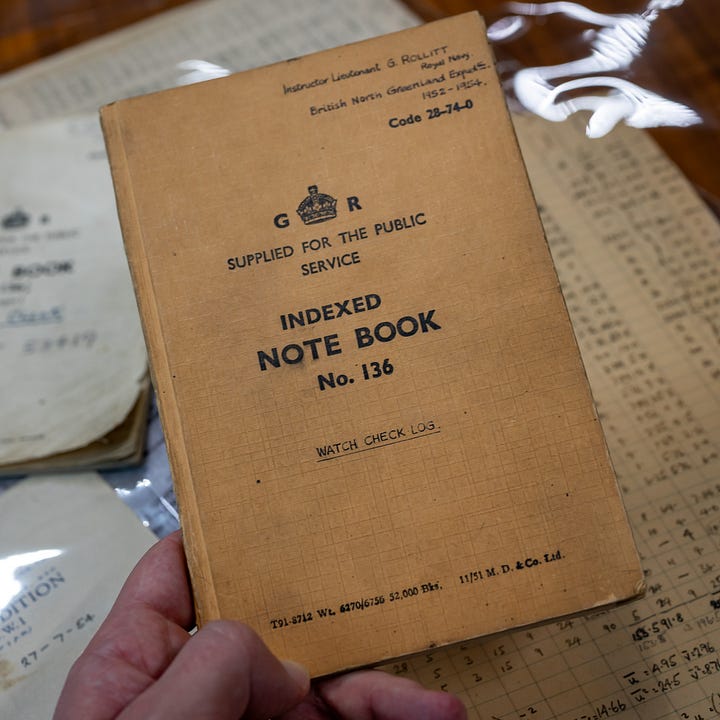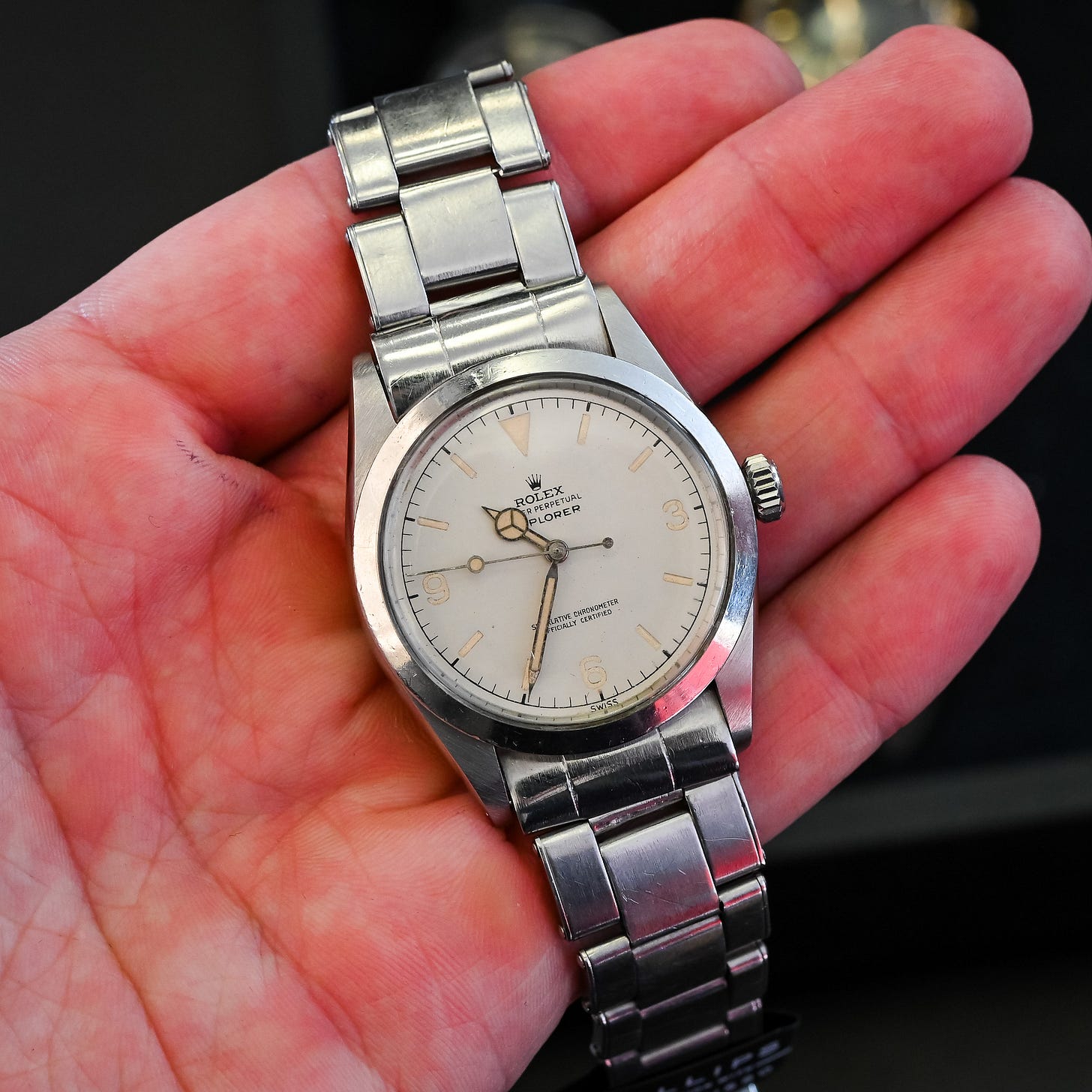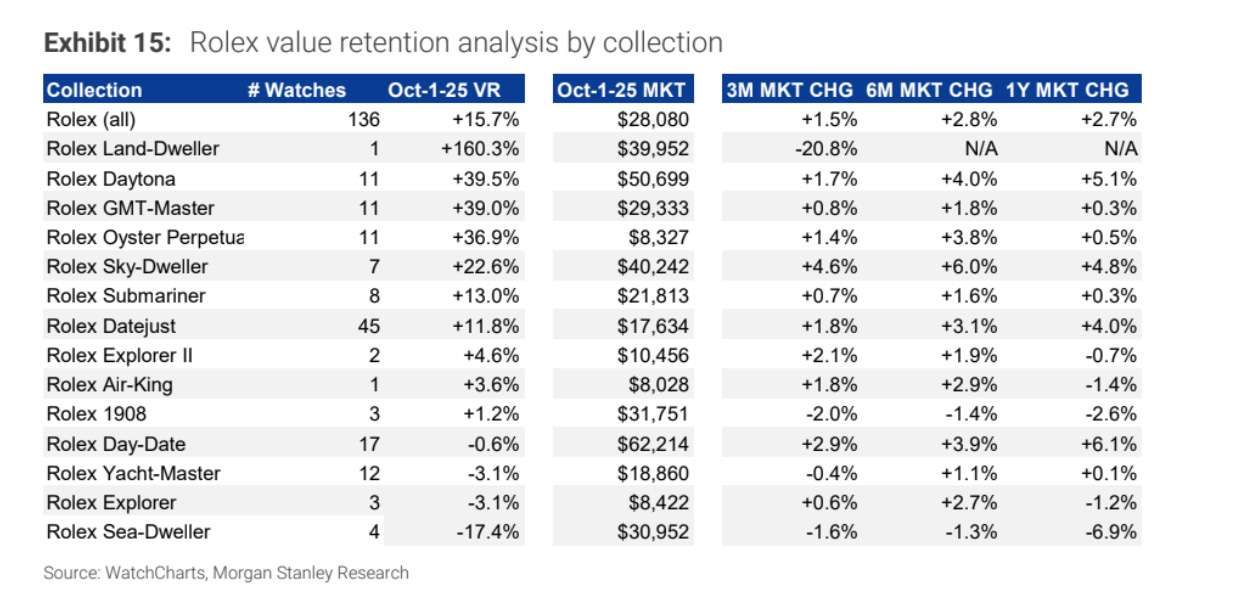Understanding the new Tudor Ranger 'Dune' by looking at the original.
A visit to Tudor’s archives helps close the gap between a muddled past and a modern field watch that just makes sense.
I wasn’t at Dubai Watch Week 😭, but I watched the kick-off keynote featuring Rolex CEO Jean-Fred Dufour, which you can see here. I also happened to see the impressive and loud Chopard Grand Strike while in Geneva, so wrote a short intro for GQ.
Meanwhile: Tudor released the new Ranger “Dune.” I visited Tudor HQ just last week—they were coy and didn’t tell me what was coming, but let me into their archives, which provided plenty of context for the new Dune.1
Paid subscribers get access to comments, 10% off straps in the Unpolished Store, and $50 off any service from Watchcheck.
Let’s revisit the Tudor Ranger

As much as any watch, the Tudor Ranger is responsible for my descent into vintage watches. In 2020, I wrote an in-depth guide, For Your Reference: The Tudor Ranger. Back then, and still today, the vintage Ranger’s a bit of an enigma. Search eBay and you’ll see a mess of ugly, fake Rangers, often the infamous “Red Ranger.”
The Ranger has long been weird: beloved, confusing, and faked to death.
Last week in Geneva, I visited Tudor headquarters, a black building tucked off to the side of Rolex’s Milgauss-green HQ. Five years after writing that collector’s guide, I got a closer look at the Ranger from Tudor’s point of view. And sure, the Dune is “just” a dial tweak, but this made it feel like a more deliberate chapter in its history of field watches.
Before the Greenland North Expedition
While Tudor references the Greenland North Expedition (more below) as the spiritual ancestor of the Ranger, its history begins before that. As sleuth niccoloy has posted, the Ranger trademark dates to 1929. In Tudor’s archives, there’s even a tonneau-shaped Ranger from 1943—totally unexpected and very Art Deco:

Back then, “Ranger” wasn’t a model name, it was a mood slapped on watches to make them feel more adventurous. It’s the only early Ranger like this I’ve ever seen. In fact, I couldn’t even find another live photo.
Let’s Go to Greenland


In 1952, Tudor released its first automatic, waterproof watch: the Oyster Prince, essentially a more accessible alternative to the automatic Rolex Oyster Perpetual.
That same year, Tudor gave 26 Oyster Princes to the British North Greenland Expedition, a scientific exploration that lasted two years. Wilsdorf outfitted the Expedition with Oyster Prince ref. 7808s: White dial, lume-filled dauphine hands, 34mm steel case. Certainly not Rangers, but we’re laying the groundwork here. The BNGE did lots of cool exploring and research, like recording the coldest temperature ever at the time (−66.1°C).
Today, Tudor has a trove of documents from the BNGE. Here’s the loan letter that came with each Oyster Prince:

In the letter, Tudor asked members of the BNGE to check the watch’s timekeeping against radio signals as frequently as possible. Today, Tudor has some of these logbooks, pages of guys checking their watches against radio signals:


As Tudor explains in its loan letter, these were standard Oyster Princes except for a special “Arctic oil” being tested, which was designed to perform at temps as low as −30°C.
In 2014, the only known surviving Oyster Prince from the BNGE resurfaced. It came from Major Desmond “Roy” Homard, who was 93 at the time and one of the last surviving members of the Expedition. After wearing it during his Greenland expedition, Homard left it at home while he went on a similar expedition to Antarctica in 1956. After that, his wife wore it for a bit—but then the watch vanished. Shortly before his wife died, she mentioned something about the watch, which caused Homard to search for it.
Eventually, he found his old Oyster Prince in the back of a kitchen drawer.
Homard contacted Tudor, and a deal was reached for Tudor to acquire his Oyster Prince for its archives.
The original Ranger
What does this have to do with the Ranger?
Technically, nothing. The BNGE is to the Tudor Ranger what Hillary and Norgay’s Everest summit is to the Rolex Explorer. In fact, the BNGE outfitting came a year before Everest. Tudor supplied watches to the BNGE, but it was a good 10 years before the Ranger was a proper thing. Still, it laid the foundation for the idea that Tudor could make a robust, affordable instrument for exploration. Tudor and Rolex are masters at placing their watches at the edges of human exploration—and then marketing the hell out of it.
By the early 1960s, this concept became the Tudor Ranger. It’s first seen in catalogs in 1969, though the earliest Ranger I’ve ever seen is a ref. 7965 with a serial dating to 1963. For a while, the Ranger wasn’t one reference—it was a shifting set of configurations, perfect for collectors to obsess over and everyone else to ignore.
Not until the 1980s did the Tudor Ranger finally get its own references with the introduction of the 90000 series. It’s why collecting the Tudor has always been a challenge. To go in-depth on collecting the Ranger, check out that old guide. I’ve learned a few more things since then, but it’s probably still 90% correct.
The Dune

That brings us to the new Ranger “Dune.”
When I wrote that guide, I didn’t even mention the British North Greenland Expedition or Roy Homard. It didn’t seem relevant—a tenuous marketing connection, at best.
But with the smaller 36mm Ranger and a new dusty beige matte dial, Tudor’s closed that gap just a little bit. I don’t want to overstate what’s basically a new dial color, but it’s fun to see Tudor play with its history. The Dune Ranger is also kinda like the opaline Black Bay GMT—a wink to those rare vintage albino Rolex sports watches. Rolex would never!

With Rolex sports watches pretty set in their ways—blocky applied numerals, glossy black dials (the great titanium Yacht-Master one notable exception), it leaves Tudor to play: Matte off-white dial with painted numerals, along with a domed dial and crystal. All those old-school stylings that don’t really go on modern watches but just make sense on a field watch.
These choices also make the modern Ranger something the old Ranger never was: truly different from the Rolex Explorer.
The Explorer and the Ranger aren’t the biggest hits for Rolex or Tudor. Field watches for nerds who read watch newsletters. According to WatchCharts, the Explorer is nearly the worst Rolex in value retention by collection:
As ever, the Ranger isn’t the star of the catalog—and that’s the point. It’s the Tudor you actually wear. With the Dune, Tudor has connected a few more links in the Ranger’s messy history, giving it just a bit more charm.
Feedback? Leave a comment (the best) or reply to this email!
Further Reading:
For Your Reference: The Vintage Tudor Ranger, Rescapement
The Watch That Came in from the Cold, the story of Roy Homard’s Oyster Prince, Esquire UK
Roy Homard’s obituary, The Telegraph
The Historic Tudor From The British North Greenland Expedition Found In A Kitchen Drawer, Hodinkee
Everything You Need to Know about Rolex Albino Dials, Hodinkee
“Tudor’s archives” sounds like I descended into some vault deep beneath Geneva. In reality, a handful of old Tudor watches and related ephemera were retrieved and brought to the employee cafe.







Thanks for sharing the context you acquired during your recent visit to the Tudor archives. Good stuff and definitely enjoying this latest Ranger.